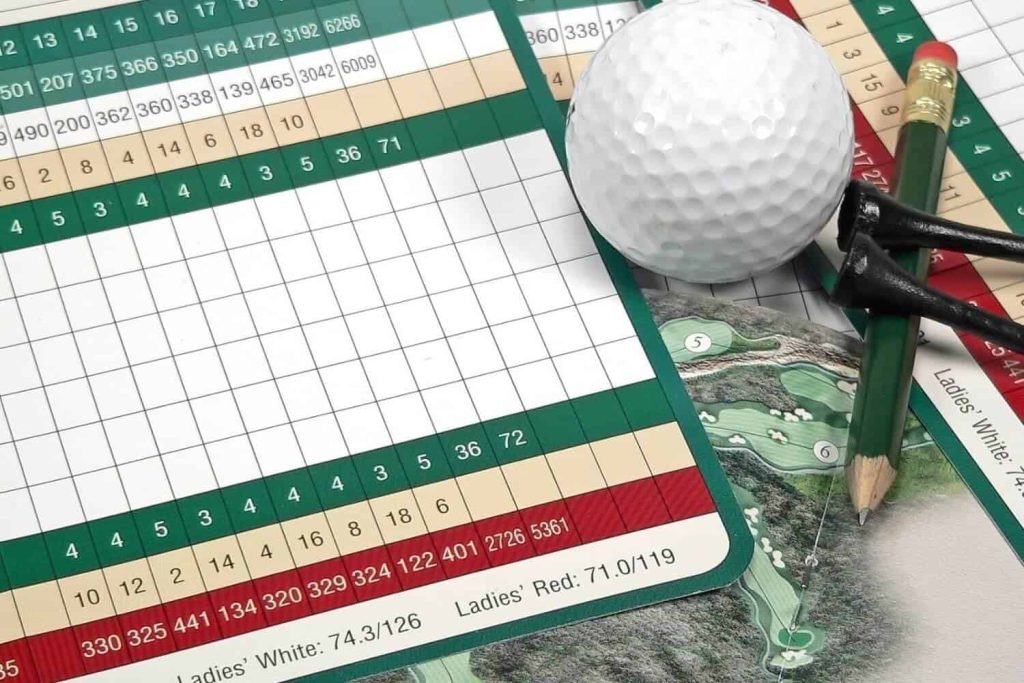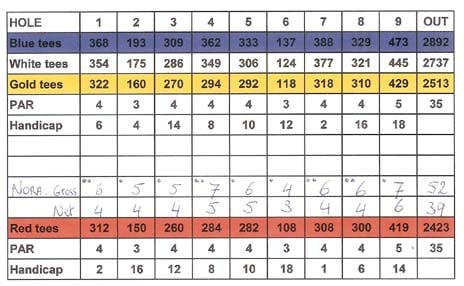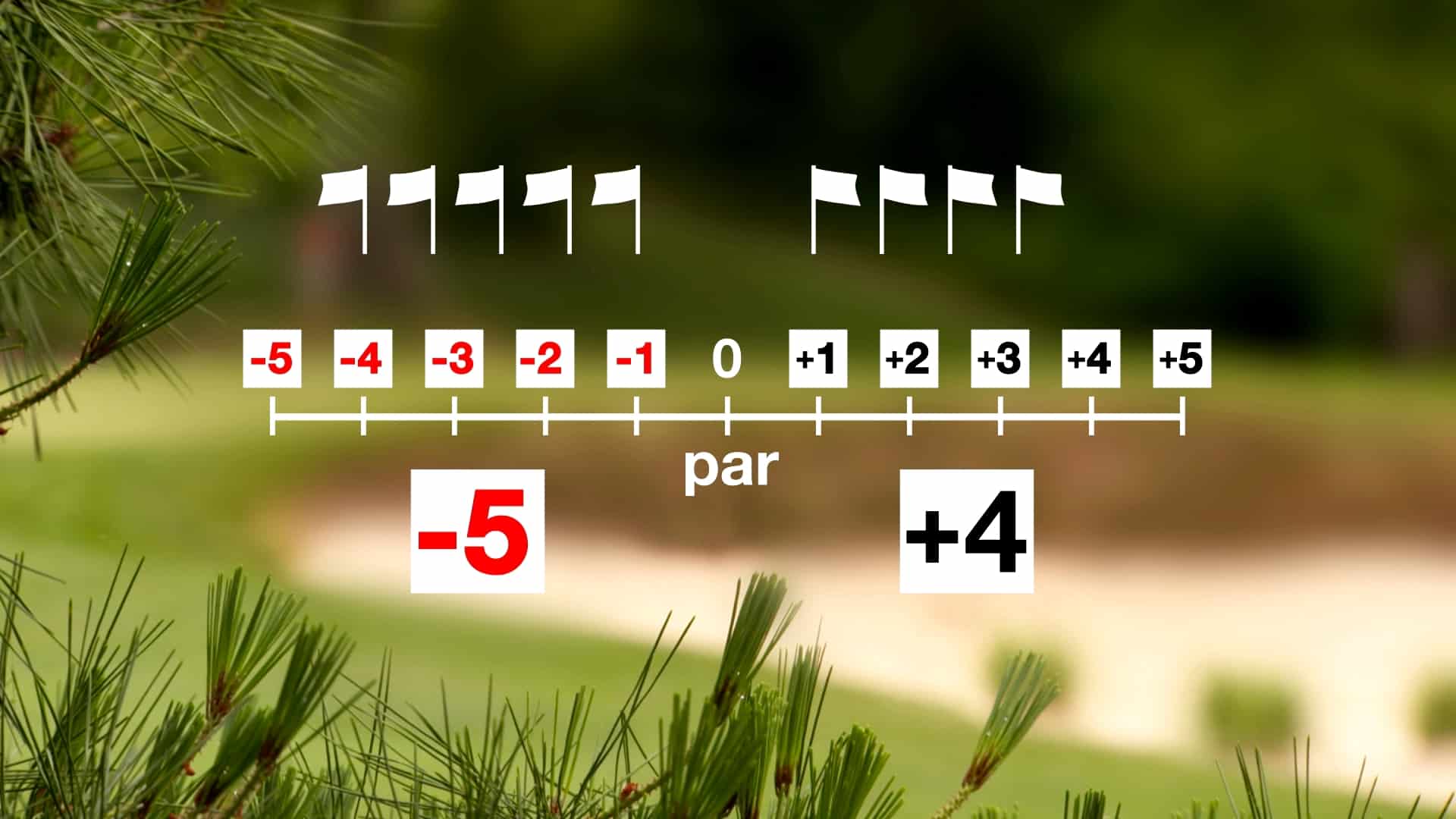How to score in golf
Key Takeaways:
- Golf scoring is based on the number of strokes, with the goal of achieving the lowest score possible.
- Understanding the different terms used in golf scoring, such as birdie, bogey, and par, is essential for keeping track of your performance.
- The Stableford scoring system provides an alternative scoring method that awards points based on the number of strokes taken on each hole, encouraging strategic play.
- Keeping score in golf is important for tracking progress, identifying areas for improvement, and maintaining fair competition.
- Accurate scorekeeping in stroke play and match play requires knowledge of the rules and proper recording techniques.
- The MECE framework can be applied to golf scoring to ensure a comprehensive understanding of the various aspects and techniques involved.
Introduction
Golfers, listen up! Discover the power of the MECE Framework in data analysis. Learn why this method is essential for improving your score on the course and maximizing your performance. Unveiling the secrets behind this framework, we’ll dive into its significance and how it can revolutionize your golf strategy.
Get ready to unlock new insights and elevate your game to the next level. It’s time to take your golf skills to a whole new MECE level!
What is the MECE Framework?
MECE stands for Mutually Exclusive and Collectively Exhaustive. It’s a framework used in data analysis to make sure all factors are considered. Information is organized into distinct categories that don’t overlap. This means no duplication and comprehensive analysis.
The MECE framework is important. It helps clarity, logical thinking, and thoroughness. Analysts can avoid mistakes and communicate findings better. It also enables better decision-making based on insights from the analysis.
Golfers can use the MECE framework to understand scoring formats. By categorizing rules, players can choose the best format for their game. It also helps to accurately record scores during play. Details like these are crucial for maintaining integrity in the game.
Using the MECE framework helps golfers understand the game better. They can analyze data effectively, make informed decisions, and accurately record scores. This leads to a more engaging and fulfilling golfing experience. Don’t miss out on maximizing your potential! Data analysis without MECE is like teeing off with a banana – you won’t get a hole-in-one.
Understanding Golf Scoring
Understanding Golf Scoring: Explore the various aspects of golf scoring, including strokes, terminology, par, and scoring formats. Gain insights into how these elements contribute to the game and affect your performance on the golf course. Discover the nuances of golf scoring that can ultimately make a difference in your overall score and game strategy.

Golf scoring based on strokes
Golf scoring is all about counting strokes. Every swing of the club is one point towards the player’s score. Lower strokes mean a better score. This system lets players compete fairly and helps decide who wins a tournament.
In the table above, each column is a different hole and each row is a different player. The numbers in the cells show how many strokes it took to complete each hole. The “Total” column adds up all the strokes and gives an overall score.
Knowing golf’s scoring system is very important. It helps players work out how they have done and compare themselves with others. Players can use scores to find out what they need to improve and set goals for their game.

So, golf scoring based on strokes is essential for understanding performance and competing fairly. Players can use this system to track their progress, spot weaknesses, and set goals to get better. Ready to learn the golf language? It’s like learning a new language – just filled with birdies and bogeys!
Different terms used in golf scoring
Text: Golf scoring has key terms. They help players monitor their progress and figure out their scores. See the table below:
| Term | Description |
|---|---|
| Par | Number of strokes a skilled golfer should take to finish a hole or course |
| Birdie | One stroke under par on a hole |
| Bogey | One stroke over par on a hole |
| Eagle | Two strokes under par on a hole |
| Double Bogey | Two strokes over par on a hole |
These terms let golfers clearly explain their rounds, spot their strengths and weaknesses, and set targets. Knowing the terms helps players determine where to focus. Being aware of golf scoring terms can boost the enjoyment of the game.
The concept of par in golf scoring
Par is a key concept in golf. It’s decided based on the length and difficulty of a hole or course. Shorter and easier holes have lower pars, and longer and tougher holes have higher. The most popular par values? 3, 4, and 5.
In golf scoring, players try to complete each hole with as few strokes as possible. If they finish a hole with the same number of strokes as par, it’s called making par. Less than par? That’s called a birdie. More strokes than par? That’s a bogey. For example: a player finishes a par-4 hole in four strokes. They made par.
Par gives players a way to judge their performance on each hole and on the course. It’s a standard for comparing scores across different courses, and it helps players set goals.
Pro Tip: Familiarize yourself with the par on the course you’re playing. Knowing the expected number of strokes per hole helps you plan your shots and make smart decisions during play.
Different scoring formats in golf
Golf tournaments use different scoring formats to challenge players and entertain spectators. Knowing the formats is important, as it helps players adjust strategies accordingly. Here’s a table showing some of these formats:
| Scoring Format | Description |
|---|---|
| Stroke Play | Count the strokes taken to complete the round. Lowest score wins. |
| Match Play | Compete against other players or teams. Points based on winning holes. |
| Stableford | Points awarded based on scores relative to par. Highest point total wins. |
| Skins Game | Lowest score on a hole wins the “skin”. If no player wins, it carries over. |
Stroke play is the common format, but there are other formats with unique dynamics. Golfers can enhance performance by understanding these systems. Prepare for a journey with more twists than a 9-hole course!
The Stableford Scoring System
The Stableford Scoring System, widely used in golf, has an intriguing origin and history. We’ll uncover its roots and how it has evolved over time. Additionally, we’ll explore the mechanics behind this system and examine modified versions that have emerged.
Finally, we’ll tackle the question of how handicaps are factored into the Stableford system. Get ready to dive into the fascinating world of golf scoring with Stableford.
Origins and history of the Stableford system
The Stableford system in golf has an amazing past and interesting beginnings. Dr. Frank Stableford, a top golfer and Royal Liverpool Golf Club member, invented it in 1931. He made the system to provide an option to classic stroke play scoring, which penalizes golfers harshly for high scores on individual holes.
In the Stableford system, golfers tally points based on their score in comparison to a pre-determined “par” value for each hole. The par concept started in Scotland in the late 19th century and refers to the expected number of strokes it should take a skilled golfer to finish a hole. Golfers gain points for scores that are better than par (eagles, birdies). However, scores worse than par will result in zero or negative points.
Modified versions of the Stableford system have been developed to fit different levels of play and handicaps. These variants may adjust the points given for different outcomes or introduce extra elements like handicaps to even the playing field between participants with diverse skill levels.
The beginnings and history of the Stableford system emphasize its importance as a substitute scoring format in golf. This system lets players of different abilities to compete against each other more fairly and encourages strategic decision-making on the course. By understanding the origins and principles of the Stableford scoring system, golfers can improve their game and experience a novel dimension of competition on the fairways.
Ready to master the Stableford system? Turn bogeys into points!
How the Stableford system works
The Stableford system is a golf scoring method used to find a round’s winner. Instead of strokes, players score points. The goal? As many points as possible!
A par is assigned to each hole. It’s the average number of strokes an expert golfer should take.
Points are earned based on performance compared to the par. For example, one stroke under par (birdie) could be worth two points. At par (par) might earn one point. And one stroke above par (bogey) could be zero points.
This scoring method encourages aggressive shots by rewarding success and minimizing bad ones. It also makes counting and comparing easier.
The Stableford system is simple and can be customized for handicaps and skill levels. For instance, extra strokes or points may be granted to higher handicap players.
The Stableford system increases enjoyment and competitiveness in golf. It provides a fair and flexible way to consider skill level and consistency.
Modified versions of the Stableford system
The Stableford system has changed, with new elements added to the traditional scoring method. These variations give players alternate ways to earn points, increasing excitement and flexibility. Here are a few examples:
- Double Bogey or Worse: Players don’t get points for a double bogey or worse. This encourages them to focus on mistakes and performance.
- Net Score System: Handicaps are taken into account. Points are calculated by subtracting the handicap from gross score. This helps golfers with higher handicaps compete.
- Bonus Points for Birdies: Bonus points for achieving a birdie (one stroke under par) or better. Extra incentive for aggressive and skillful play.
- Limited Maximum Score: Players are limited in the number of strokes per hole. Prevents high scores from impacting the overall score.
These modifications have been created as golfers look for ways to make the game more enjoyable. It lets golfers explore strategies and approaches while sticking to a scoring framework.
If you think the Stableford system is tricky, wait till I take my swings to the fairway!
Dealing with handicaps in the Stableford system
The Stableford system in golf scoring provides a way to even the playing field and make it fair for all skill levels. It does this through the use of handicaps. Handicaps are adjustments made based on a player’s skill and past performance.
For the Stableford system, these handicaps are used to determine the number of points a player will receive for each hole. To handle this, players are assigned a certain number of handicap strokes, which are then taken off their final score. This is so less experienced players can still compete with more experienced ones.
Dealing with handicaps in the Stableford system takes careful calculation. To get the right number of strokes, one must accurately determine the handicap index. This is done by looking at factors like past scores, course difficulty, and playing conditions.
The method may vary depending on what version of the Stableford system is used. Some modified versions may have extra allowances for different levels of handicaps.
In conclusion, understanding how to deal with handicaps in the Stableford system is essential for fair competition. By adjusting scores based on skill level, everyone can have an enjoyable game.
Keeping Score in Golf
Keeping score in golf is more than just a numbers game. In this section, we’ll uncover the importance of keeping score, learn how to track your progress in stroke play and match play, and gain valuable tips for accurate scorekeeping.
So, whether you’re a beginner looking to track your improvement or a seasoned golfer aiming for your best game, understanding the intricacies of keeping score will enhance your golfing experience.
Importance of keeping score in golf
Keeping score in golf is essential. It’s a fundamental part of the game. Golf relies on self-regulation and integrity. Keeping an accurate record of one’s score is key for fairness and transparency.
It allows players to track their performance, progress over time, and identify areas to improve.
Moreover, keeping score provides data for analysis and evaluation. Players can analyze their strengths and weaknesses, spot patterns and trends, and make informed decisions about their training and strategy. Keeping score helps to set realistic goals and focus practice.
Furthermore, keeping score allows for fair competition. In stroke play, accurate scorekeeping ensures all players are judged equally. It promotes honesty and integrity on the course.
Additionally, keeping score allows players to understand their performance relative to others. In match play, accurate scorekeeping is essential to determine winners or losers. It helps create a level playing field for fair assessment of each player’s abilities.
Keeping score in golf is like trying to solve a Rubik’s Cube blindfolded – frustrating, confusing, and sure to test your sanity.
How to keep score in stroke play
In stroke play, score-keeping in golf is a must. It allows players to monitor their performance and see their final score at the end of the round. The MECE framework can help you comprehend and apply the scoring process.
These four steps will help you keep score in stroke play:
- Count strokes: Record the total number of strokes taken by each player to finish the hole. A stroke is counted whenever the ball is hit. The aim is to finish each hole with as few strokes as possible.
- Record penalty strokes: If a player incurs any penalty during the hole, add that extra stroke to the count. Common penalties are hitting into hazards such as bunkers or water, taking unplayable lies, or going out-of-bounds.
- Calculate hole score: Add up the total strokes and penalty strokes for each hole to get the hole score for each player. For example, if a player takes 4 strokes and incurs a 1-stroke penalty, their hole score would be 5.
- Calculate total score: After completing all the holes, add the individual hole scores to get each player’s total score. The player with the lowest total score is the winner.
It’s important to stay precise and honest when keeping score. Errors could lead to incorrect final scores, penalties, or disqualification.
Knowing how to accurately keep score ensures fair competition and provides an accurate assessment of skill and performance on the golf course.
How to keep score in match play
Match play is a way to score in golf, instead of counting strokes for the whole round. To keep track of the game and its result, you need to know how to score. Here’s a 4-step guide:
- Know the basics. Players or teams compete hole by hole. The goal is to win more holes than your opponent. Whoever takes fewer strokes on a hole wins that hole.
- Use the traditional method. Add a (+) for a win, (–) for a loss, and (=) for a tie.
- Log the score. On a scorecard, or verbally, record each player’s win, loss, or tie.
- Count up hole wins. At the end, the player with more holes won wins the match.
Also, consider handicaps when scoring. Adjust scores for extra strokes.
Pro Tip: Keep a neat scorecard or use an app to keep score and track the match’s outcome.
Scorekeeping in golf: Digits count – unless you’re playing mini-golf!
Tips for accurate scorekeeping
Accurate golf scorekeeping is necessary for tracking progress and settling winners. Here are some tips:
- Use a dependable system: Pick a method that fits you and makes it simple to enter scores.
- Put down scores right away: Record scores as soon as you get them, to avoid errors or forgetting details. Do this after each hole or at the end of each round.
- Double-check calculations: Math errors can easily occur when adding up scores, so double-check your math, particularly if using pencil and paper.
- Speak with playing partners: When multiple players are keeping score, communicate and compare scores regularly for accuracy.
- Keep a tidy scorecard: Make your scorecard neat and readable, with clear markings for each score. Abbreviations or symbols you understand can help.
By following these tips, golfers can keep accurate records and guarantee fairness among players.
Conclusion
Understanding and implementing proper scoring techniques in golf is vital for achieving success on the course. In this conclusion, we will recap the MECE framework and its application in golf scoring, while also emphasizing the importance of incorporating these techniques into your game. By adopting these strategies, you can improve your overall golf performance and enhance your chances of attaining favorable scores.
Final thoughts on the importance of understanding and using proper scoring techniques in golf
In golf, properly understanding and implementing scoring techniques is essential to assessing and progressing one’s skills. The Mutually Exclusive and Collectively Exhaustive (MECE) Framework helps golfers approach scorekeeping systematically and organized. This eliminates confusion or omissions in addressing all elements of scoring.
To accurately record and interpret scores during gameplay, it’s important to know the terms related to golf scoring, such as birdie, bogey, double bogey, and par. They are used to describe a score relative to the typical number of strokes for a hole.
One special scoring system, the Stableford Scoring System, is worth focusing on. It was designed as an alternate to traditional stroke play and assigns points based on how well a golfer does compared to a pre-set value for each hole. Knowing how the Stableford system works helps golfers evaluate their performance more holistically, not just total strokes but also handicaps.
Scorekeeping isn’t just about jotting down results. It offers feedback on individual performance, indicates areas for development, and enables fair competition between players. To keep score correctly in stroke play and match play formats, it’s important to know how to do it. Effectively maintaining score ensures consistency and fairness in tracking progress over time.
A few tips will help enhance accuracy in scorekeeping. Assign one person to be the designated scorekeeper for each round or match. Utilizing apps or digital scorecards streamlines the process and reduces mistakes. Checking scores with playing partners or official scorecards frequently helps maintain accuracy and sort out any differences.
Therefore, to get the most out of each round of golf, it’s essential to understand and use proper scoring techniques. The MECE Framework, knowing terms like birdie and bogey, being familiar with the Stableford Scoring System, and utilizing effective scorekeeping methods all contribute to a comprehensive and equitable evaluation of one’s golf performance.
Some Facts About Scoring in Golf:
- ✅ Golf scoring is based on hitting the ball into the hole in the fewest number of strokes possible. (Source: Team Research)
- ✅ Scoring in golf is based on the concept of par, which represents the number of strokes a skilled golfer would typically take to complete a hole or the entire course. (Source: Team Research)
- ✅ Different terms are used to describe a golfer’s score compared to par, such as birdies, eagles, pars, bogeys, double bogeys, and triple bogeys. (Source: Team Research)
- ✅ There are different scoring formats in golf, including stroke play, match play, and the Stableford system. (Source: Team Research)
- ✅ Keeping score in golf involves recording the number of strokes taken on each hole, including any penalty strokes, and adding up the scores to get the total for the round. (Source: Team Research)
FAQs about How To Score In Golf
How does scoring work in golf?
Scoring in golf is based on the number of strokes it takes to get the ball into the hole. Each swing at the ball is counted as a stroke, and at the end of each hole, the total number of strokes is tallied as the score for that hole. The scores for each hole are recorded on a scorecard, and at the end of the round, all the hole scores are added together to get the total score for the round.
What is the Stableford scoring system in golf?
The Stableford scoring system is a unique way to play golf where the goal is to score the most points instead of having the lowest score. Each score to par is assigned a set number of points, with eagles and birdies earning the most points and doubles or worse earning zero points. The system encourages aggressive play and rewards risk-taking. It can be used in tournaments or casual outings with friends, and there are options to modify the system to suit different skill levels.
How do you keep score in golf?
Keeping score in golf allows you to track your game and see if you are improving on certain holes. In stroke play, you count every stroke for every hole played. You can keep track of your own score if you are alone, but often you keep track of your opponent’s score and they keep track of yours. Write down your opponent’s name and count every stroke they make for each hole. Even if they swing and miss, it still counts as a stroke. Hitting balls into the water or out of bounds and losing your ball result in penalties.
What are some basic golf scoring terminologies?
In golf, there are different terms used to describe a golfer’s score compared to par. Some common terminologies include albatross (3 strokes under par), eagle (2 strokes under par), birdie (1 stroke under par), par (even with par), bogey (1 stroke over par), double bogey (2 strokes over par), and triple bogey (3 strokes over par).
What are the different golf formats for scoring?
There are different scoring formats used in golf, including stroke play, match play, and the Stableford system. In stroke play, the golfer with the lowest total number of strokes wins. In match play, the scores for each hole are compared to the opponent’s scores, and the golfer who wins the most holes wins the match. The Stableford system converts a golfer’s score in relation to par into points, and the golfer with the highest total points wins.
How do golf handicaps work?
Handicaps are numerical values assigned to golfers’ potential on a course, allowing players of different skill levels to compete against each other. In stroke play, players can adjust their scores based on their handicap to determine their net score. The handicap stroke indexes are used to adjust scores, and there are apps available to help with the calculations. Handicaps make it possible for players of different skill levels to compete on an equal footing.







